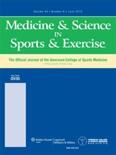Tebbutt, Scott J.
Person Preferred Name
Scott J. Tebbutt
Related Works
Content type
Digital Document
Abstract
Purpose: Angiopoietin-like 4 (ANGPTL4) is known to play a variety of roles in the response to exercise, and more recently has been shown to enhance the healing of tendon, a fibrous load-bearing tissue required for efficient movement. The objective of the current study was to further explore the mechanisms of ANGPTL4's effect on tendon cells using a gene array approach.
<p>Methods: Human tendon fibroblasts were treated with recANGPTL4 and their global transcriptome response analyzed after 4 and 24 h. We also conducted functional studies using tendon fibroblasts derived from human subjects, cultured in the presence or absence of applied cyclic stretch and/or siRNA for ANGPTL4, and as confirmation we also used tendon cells from wild type (ANGPTL4 +/+) or knockout (ANGPTL4-/-) mice.
<p>Results: The leading functions of ANGPTL4 predicted by the resulting pathway analysis were cell movement and proliferation. The experiments demonstrated that ANGPTL4 significantly enhanced tendon cell proliferation and the cell cycle progression, as well as adhesion and migration.
<p>Conclusion: Taken together, these findings provide novel molecular insights into the effect of ANGPTL4, a multifunctional protein that regulates the physiological response to exercise, on fundamental tendon cell functions.
Origin Information
Content type
Digital Document
Abstract
INTRODUCTION:
Exposure to air pollution impairs aspects of endothelial function such as flow-mediated dilation (FMD). Outdoor exercisers are frequently exposed to air pollution, but how exercising in air pollution affects endothelial function and how these effects are modified by exercise intensity are poorly understood.
OBJECTIVES:
Therefore, the purpose of this study was to determine the effects of low-intensity and high-intensity cycling with diesel exhaust (DE) exposure on FMD, blood pressure, plasma nitrite and nitrate (NOx) and endothelin-1.
METHODS:
Eighteen males performed 30-minute trials of low or high-intensity cycling (30% and 60% of power at VO2peak) or a resting control condition. For each subject, each trial was performed once while breathing filtered air (FA) and once while breathing DE (300ug/m3 of PM2.5, six trials in total). Preceding exposure, immediately post-exposure, 1 hour and 2 hours post-exposure, FMD, blood pressure and plasma endothelin-1 and NOx concentrations were measured. Data were analyzed using repeated-measures ANOVA and linear mixed model.
RESULTS:
Following exercise in DE, plasma NOx significantly increased and was significantly greater than FA (p<0.05). Two hours following DE exposure, endothelin-1 was significantly less than FA (p = 0.037) but exercise intensity did not modify this response. DE exposure did not affect FMD or blood pressure.
CONCLUSION:
Our results suggest that exercising in DE did not adversely affect plasma NOX, endothelin-1, FMD and blood pressure. Therefore, recommendations for healthy individuals to moderate or avoid exercise during bouts of high pollution appear to have no acute protective effect.
Origin Information
Content type
Digital Document
Abstract
Background: Exposure to particulate matter 2.5 μm or less (PM2.5) that contains transition metals may play a role in systemic oxidative stress and inflammation. Exposure to diesel exhaust (DE) can increase adhesion molecules, which are important in the inflammatory response; however, it is unclear how exercising in DE affects adhesion molecules and how exercise intensity modulates this response.
Aim: To determine how DE exposure during exercise of varying intensities affects adhesion molecules and markers of systemic inflammation.
Methods: Eighteen males performed 30 min cycling bouts at low intensity and high intensity (30% and 60% of power at VO2peak (peak oxygen consumption) and a control condition (rest)). Each trial was performed once breathing filtered air (FA) and once breathing DE (300 μg/m3 of PM2.5, six trials in total). Prior to, immediately post, 1 and 2 hours post exposure, blood was drawn to measure parameters of a complete blood count and soluble (s) platelet-Selectin, endothelin-Selectin, intracellular cell adhesion molecule (sICAM)-1 and vascular cell adhesion molecule (sVCAM)-1. Data were analysed using repeated-measures analysis of variance.
Results: Two hours following high-intensity exercise, sICAM-1 was significantly less in DE compared with FA (p=0.008). Immediately following rest (p=0.013) and high-intensity exercise (p=0.042) in DE, sICAM-1 was significantly greater than immediately following low-intensity exercise in DE. There were no significant differences in other markers between DE and FA.
Conclusions: Based on this study, healthy individuals may not experience an acute increase in adhesion molecules and systemic inflammatory markers from exercising in DE compared with FA, and higher exercise intensities do not appear to increase the likelihood that DE will affect adhesion molecules and systemic inflammatory markers.
Origin Information



